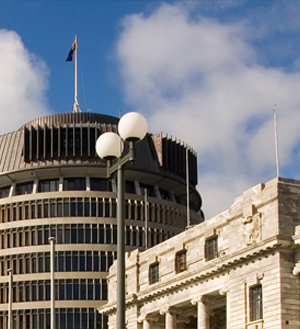The Government unveiled a raft of changes to New Zealand’s national direction, with details revealed on Thursday, 29 May 2025.
The Government has announced a series of proposed reforms to existing national direction as it relates to infrastructure and development. These changes form part of a wider overhaul of the resource management system, including replacing the Resource Management Act 1991 (RMA).
The reforms include changes to policies that provide direction for local authorities on how to implement New Zealand’s resource management framework, and overall direct a more enabling framework for infrastructure and development. The Government has stated that the RMA is a direct cause of New Zealand’s infrastructure deficit, and addressing that deficit is described as a critical part of its plan to boost growth and improve productivity.
New National Policy Statement for Infrastructure
The new National Policy Statement for Infrastructure (NPS-I) proposes to better enable and protect infrastructure.
The NPS-I proposes decision-makers be required to recognise and provide for the functional or operational need of certain infrastructure to be in particular environments to support development and operation. For example, a related policy proposal aims to broadly recognise and provide for “infrastructure-supporting activities” – such as quarrying – to enable infrastructure to function effectively.
The Government has decided to postpone its development of an effects management hierarchy to address adverse effects on values in areas of national importance (section 6 of the RMA) and other national direction until it replaces the RMA.
New National Policy Statement for Natural Hazards
The proposed National Policy Statement for Natural Hazards (NPS-NH) will not apply to infrastructure (as defined in the RMA) and primary production (as defined in the National Planning Standards). The NPS-NH will focus on natural hazards as they relate to subdivision, land use and development.
The Government has proposed a new risk matrix that identifies levels of natural hazard risk to provide nationally consistent language. Where there is “significant risk”, the development should be avoided, or the risk should be reduced. The risk associated with some types of development (such as childcare facilities or aged care facilities) would be greater than with others (such as an unoccupied storage facility). Although the proposed NPS-NH does not tell local authorities how to respond to a specific level of risk, it does tell them to proportionately manage natural hazard risk.
Amendments to the National Policy Statement for Renewable Electricity Generation
Changes to the National Policy Statement for Renewable Electricity Generation (NPS-REG) include directing decision-makers to give greater weight to the national significance of renewable electricity generation projects and the benefits of maintaining and upgrading existing assets as well as requiring consideration of the operational or functional need for REG activities to be in certain environments.
To enable nationally consistent provisions, there is also the proposal to enable renewable electricity generation with adverse effects not within nationally important areas (section 6 of the RMA) or covered by national direction, so long as these effects are avoided, remedied or mitigated where practicable.
Amendments to the National Policy Statement on Electricity Transmission to apply to Electricity Networks
Similar to the amendments in the NPS-REG, the Government proposes to direct decision-makers to recognise and provide for the national significance and benefits of electricity networks, the role of electricity distribution businesses and to recognise their contribution to modern life and the functioning of the community and economy.
Amendments intend to provide for the functional or operational need to maintain and upgrade the existing electricity networks – for renewable electricity generation to connect to – which traverse a wide range of environments.
Infrastructure and routine activities associated with electricity networks will be enabled so long as they are outside areas of national importance (section 6 of the RMA areas) or those covered by national direction and adverse effects are avoided, remedied or mitigated, where practicable.
In terms of managing effects within significant natural environments, the Government proposes to remove the need to avoid adverse effects on existing sensitive activities.
Finally, the existing National Policy Statement for Electricity Transmission Activities is set to ensure spatial planning documents consider electricity networks which will require councils to engage with electricity network operators and recognise the designation process can support long-term planning.
Amendments to National Environmental Standards for Electricity Network Activities
Amendments to the National Environmental Standards for Electricity Transmission Activities to apply to Electricity Network Activities (NES-ENA) include the establishment of a “National Grid Yard” and “National Grid Subdivision Corridor” to prevent inappropriate buildings and structures, land disturbance and subdivision by third parties taking place near or underneath transmission lines and support structures.
The NES-ENA is also proposing to make the following routine activities permitted – the Government seeks feedback whether management plans should be submitted to regional councils as part of a permitted activity:
• river crossings;
• groundwater takes and use, dewatering;
• stormwater discharges;
• structures in the coastal marine area; and
• works in the bed of a lake or river.
Proposed changes aim to make certain electricity distribution activities on existing lines, the development of new distribution lines and cabinets and EV charging, where standards are met, permitted activities.
Amendments to the National Environmental Standards for Telecommunication Facilities
Proposals to amend the National Environmental Standards for Telecommunication Facilities (NES-TF) aim to update and clarify existing provisions to reflect advancing infrastructure needs and changes in technology. The amendments include updates to the permitted activity standards for structures such as poles, headframes, cabinets and antennas. They also propose expanding the scope of these standards by allowing new activities in additional zones and removing certain restrictions within road reserves.
The amendments also intend to allow the use of renewable electricity generators for telecommunication facilities and permit temporary facilities where needed. Additionally, the proposal includes provisions to enable customer connection lines to heritage buildings to balance connectivity with heritage protection.
Other minor technical updates are proposed to ensure the NES-TF remains effective and fit for purpose as the sector evolves.
New National Environmental Standards for Granny Flats
A new National Environmental Standards for Granny Flats (NES-GF) is proposed to support the development of granny flats (minor residential units) in residential, rural, mixed use, and Māori purpose zones across all of New Zealand. The proposed NES-GF is intended to enable one small (up to 70m2), detached, self-contained, single-storey house (minor residential unit) per site for residential use as a permitted activity which will not require a resource consent.
New National Environmental Standards for Papakāinga
The proposed National Environmental Standards for Papakāinga (NES-P) is intended to enable papakāinga by providing a nationally consistent planning framework. The proposal permits a limited scale of papakāinga development (up to 10 homes) on certain types of land in rural zones, residential zones and Māori-purpose zones. Certain non-residential activities ancillary to the residential activities of the papakāinga are proposed to be permitted including commercial, conservation, educational and health, sports and recreation, marae, urupā and māra kai and visitor accommodation (maximum eight guests).
Consultation and implementation
The Government is actively seeking feedback on these proposals until 27 July 2025.
This includes feedback on whether iwi, hapū and other Māori groups have concerns about the proposal or any perceived impacts on sites of significance to Māori, marae, Māori land, land returned under Treaty settlements, or other matters of significance to Māori groups, though feedback is generally not limited to this area.
Implementation will be both non-statutory, through guidance developed after public feedback, and statutory, through legal requirements for councils and decision-makers. Generally, national environmental standards and policy statements take effect immediately, with plan changes required to implement national policy statements undertaken “as soon as practicable”. The Government is consulting on alternative implementation options to this requirement, including that amendments be made within a five-year timeframe, or that full implementation takes place with, or before, plan reviews.
If you have any questions about the matters raised in this article, please get in touch with the contacts listed or your usual Bell Gully adviser.
Disclaimer: This publication is necessarily brief and general in nature. You should seek professional advice before taking any action in relation to the matters dealt with in this publication.











